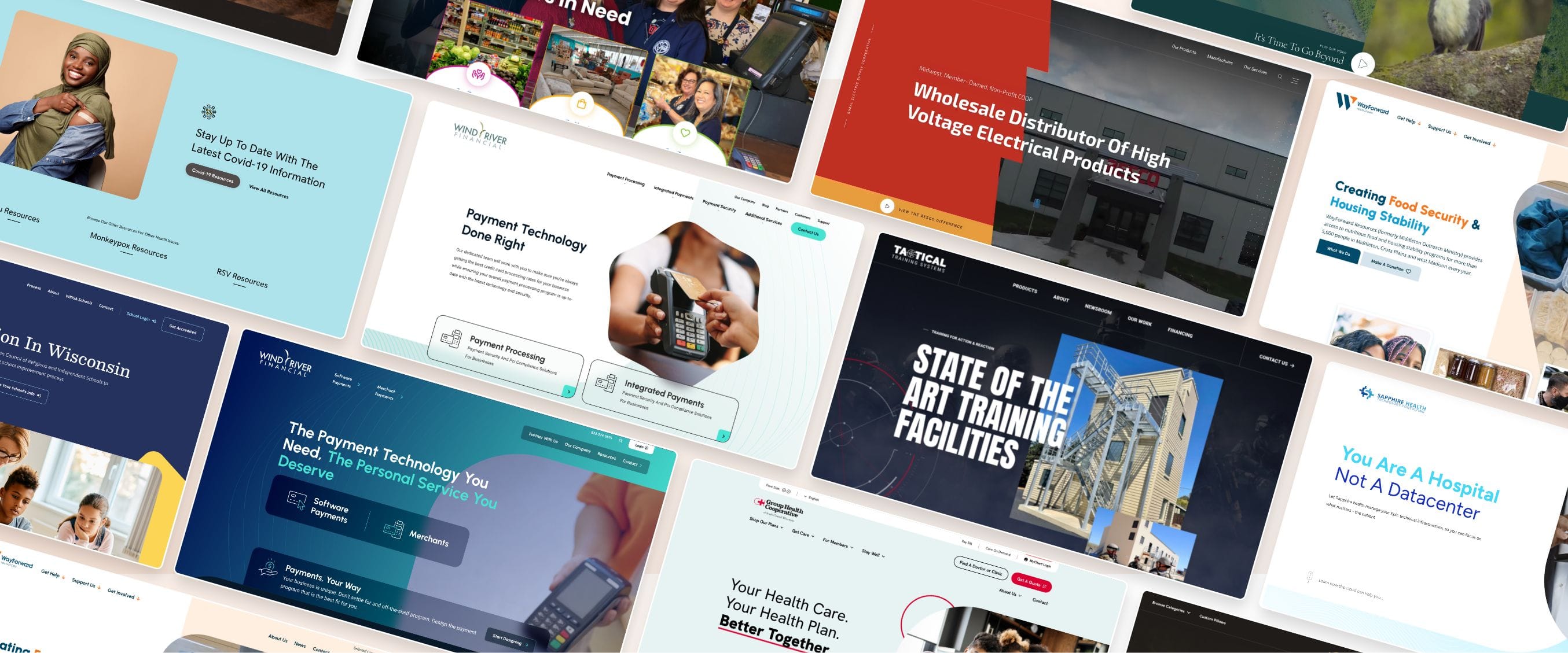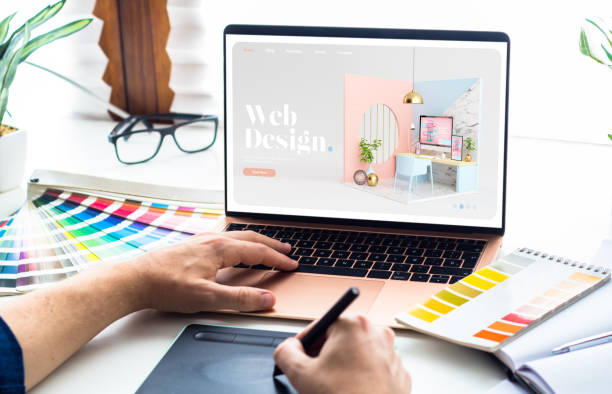The Ultimate Guide to Website Design: Tips for Creating Stunning Websites
The Ultimate Guide to Website Design: Tips for Creating Stunning Websites
Blog Article
Modern Web Site Layout That Captures Interest and Converts
In a progressively digital landscape, contemporary internet site design has actually arised as a critical factor in capturing customer focus and driving conversions. As we check out these important parts, it comes to be clear that comprehending their interaction can dramatically impact a website's efficiency and user complete satisfaction.
Value of Visual Hierarchy
Aesthetic hierarchy is a crucial element in internet site design, as it guides customers' interest and boosts their overall experience. By tactically arranging content, developers can direct customers to the most important information first, thereby raising involvement and improving use. Reliable visual hierarchy utilizes numerous techniques, including dimension, contrast, spacing, and shade. Bigger components normally attract the eye, while contrasting colors can emphasize essential messages, making them attract attention amongst more controlled elements.
Including a logical flow in content setup is important; for example, positioning the most vital information at the top of a web page cultivates instant acknowledgment. Additionally, regular usage of typography, such as varying font sizes and designs, aids develop a clear material framework. This company not just aids in navigating but likewise develops count on, as individuals really feel a lot more comfortable when they can conveniently discover what they are seeking.
Inevitably, a well-executed aesthetic power structure not just enhances visual appeal but likewise substantially influences user behavior. By focusing on essential components and guaranteeing a seamless experience, designers can properly transform site visitors into consumers, reinforcing the relevance of this foundational design concept in modern internet site advancement.
Responsive Design for All Instruments
Producing a seamless experience throughout different gadgets is important in today's digital landscape, where individuals access websites from desktop computers, tablets, and smart devices alike. Responsive layout is a vital technique that ensures web sites adjust fluidly to different display sizes, orientations, and resolutions. By employing adaptable grids, pictures, and CSS media inquiries, developers can develop layouts that maintain visual honesty and performance, despite the gadget being utilized.
The value of receptive design prolongs past looks; it straight influences user engagement and conversion rates. A website that works well on all tools urges longer gos to and decreases bounce rates, as individuals are most likely to connect with material that is simple to navigate. Moreover, internet search engine, particularly Google, prioritize mobile-friendly websites in their rankings, making receptive style an essential element of search engine optimization (SEARCH ENGINE OPTIMIZATION)
Incorporating responsive layout not only boosts individual experience yet likewise streamlines the development procedure. By developing a single site that functions across devices, companies can conserve time and sources contrasted to establishing separate mobile and desktop computer variations. Ultimately, receptive style is a fundamental technique for modern internet site style, ensuring accessibility and contentment for all customers, no matter of their tool.
Involving Interactive Components
While a receptive style prepares for a functional internet site, integrating engaging interactive aspects is vital for recording user attention and promoting much deeper connections. Website Design. Interactive elements, wikipedia reference such as animations, tests, and clickable infographics, create an extra dynamic customer experience, motivating site visitors to invest even more time on the website
Including interactive functions can likewise lead customers via complex details, making it much easier to absorb web content. For instance, interactive sliders can show product variants, while embedded videos can supply demonstrations or testimonials that reverberate even more than fixed pictures or text. Gamification strategies, like benefits for involving or finishing tasks with material, can enhance user inspiration and retention.
Effective use of interactive aspects not only enhances the user experience yet can additionally bring about higher conversion rates. By making interactions enjoyable and interesting, businesses can grow a feeling of commitment and depend on with their audience. It is important to stabilize interactivity with efficiency; overly complicated functions might impede site rate, negatively affecting user satisfaction. Ultimately, incorporating well-designed interactive components can considerably raise an internet site's efficacy, driving engagement and conversions in today's affordable electronic landscape.
Streamlined Navigating Practices
Reliable navigation is a cornerstone of any kind of effective website, as it directly influences individual experience and material ease of access. Streamlined navigation methods guarantee that users can conveniently find info, boosting their communication with the website. A well-structured navigation menu ought to be user-friendly and straightforward, generally including a limited variety of key classifications to prevent overwhelming visitors.
To attain streamlined navigating, developers must prioritize a hierarchical framework that logically arranges material. Applying breadcrumb trails can give users with context concerning their current location within the website, permitting seamless backtracking. Additionally, utilizing drop-down menus can efficiently conserve space while still giving access to subcategories.
Receptive layout is critical, as navigating needs to be functional throughout all tools (Website Design). Mobile users, specifically, gain from touch-friendly menus and collapsible areas that keep usability without endangering appearances

Reliable Call-to-Action Strategies
A well-crafted call-to-action (CTA) is essential for guiding users toward wanted results on an internet site, as it urges them to engage with content or make an acquisition. To optimize their performance, CTAs need to be clear, compelling, and purposefully put throughout the site.
First, utilize action-oriented language read more that communicates seriousness or worth, such as "Obtain Started," "Sign up with Currently," or "Insurance claim Your Discount." This language not only inspires customers yet likewise sets clear expectations about the next steps.
Second, consider design aspects; CTAs must stand out visually with contrasting colors, enough whitespace, and famous positioning. A button that is easy to see and click boosts the chance of individual interaction.
Additionally, customizing CTAs based upon user behavior or demographics can considerably improve involvement. Customized messages resonate more with individuals, driving greater conversion prices.

Conclusion
Finally, modern-day site layout stresses the assimilation of visual pecking order, receptive designs, involving interactive components, structured navigation, and efficient call-to-action approaches. These elements jointly enhance individual experience, making certain that site visitors remain involved and inspired to check out content additionally. By prioritizing these design concepts, businesses can considerably improve user retention and conversion prices, ultimately causing better success in the electronic landscape. The continual development of website design emphasizes its important role in reliable on-line communication and advertising.
In an increasingly electronic landscape, contemporary website layout has actually emerged as a crucial variable in recording individual focus and driving conversions.Visual pecking order is a critical element in web site design, as it guides users' focus and enhances their overall experience.The importance of responsive style prolongs past visual appeals; it directly affects individual engagement and conversion prices.Integrating responsive design not only boosts individual experience however also enhances the growth process. Eventually, responsive layout is a basic strategy for modern-day internet site design, making certain accessibility and contentment for all users, no matter of their device.
Report this page